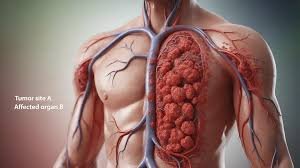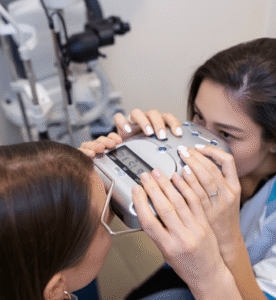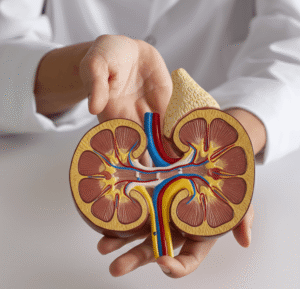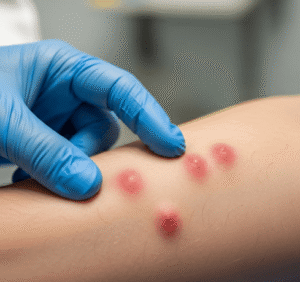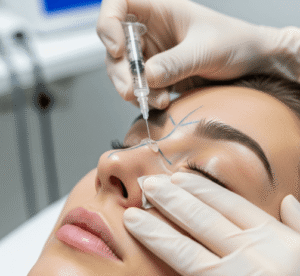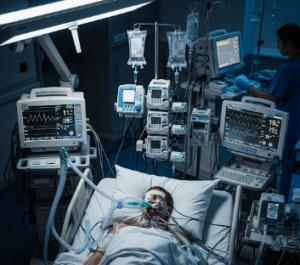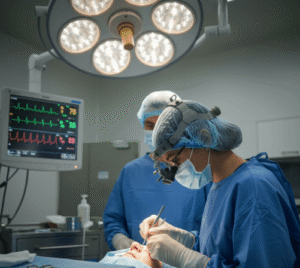Overview
Hemangiosarcoma—often referred to clinically as angiosarcoma—is a rare, aggressive cancer that arises from the cells lining blood vessels. In Korea, it most commonly affects the skin and scalp of older adults, but can also involve soft tissue, liver, spleen, heart, and bone. Outcomes improve with early, coordinated care at high-volume sarcoma centers, where surgery, radiotherapy, systemic therapy, and clinical trials are available.
What is Hemangiosarcoma?
Hemangiosarcoma is a malignant vascular tumor characterized by rapidly proliferating, irregular blood-filled channels. It can occur anywhere there are blood vessels. Cutaneous disease (often on the scalp/face) is the most frequent presentation in East Asia, while visceral disease (e.g., liver, spleen) is less common but highly lethal. Diagnosis requires imaging and tissue biopsy with immunohistochemistry (e.g., CD31, ERG, CD34), followed by staging to guide treatment.
Symptoms
- Skin/soft tissue: bruise-like purple patch or nodule, easy bleeding, non-healing lesion—commonly on scalp/face
- Liver/spleen: abdominal pain or fullness, fatigue, unexplained anemia, sudden internal bleeding (shock in rupture)
- Heart: shortness of breath, chest pain, pericardial effusion (fluid around the heart)
- Bone/other sites: focal pain, swelling, pathologic fracture
- Systemic: weight loss, fever, fatigue
Causes
- Mostly sporadic with no identifiable cause
- DNA damage from ionizing radiation (prior radiotherapy)
- Chronic lymphedema (e.g., post–lymph node surgery or filariasis)
- Certain chemical exposures linked to hepatic angiosarcoma (e.g., vinyl chloride, arsenic; historical thorotrast)
Risk Factors
- Older age (particularly for cutaneous scalp angiosarcoma)
- Male sex for scalp presentations noted in East Asian populations
- History of radiation therapy to the area
- Long-standing lymphedema of a limb
- Occupational exposures to specific industrial chemicals (now uncommon)
Complications
- Early metastasis—especially to lungs, liver, and lymph nodes
- Severe bleeding from tumor rupture (notably liver/spleen)
- Local recurrence despite treatment
- Cardiac tamponade in cardiac involvement
- Treatment-related effects (wound-healing issues after surgery, cytopenias with chemotherapy)
Prevention
- Workplace protection against hazardous chemicals; adherence to safety regulations
- Sun protection (hat, sunscreen) for the scalp/face, particularly in older adults with chronic photodamage
- Prompt evaluation of unexplained bruise-like skin lesions that enlarge or bleed
- Careful management of chronic lymphedema (compression, skin care)
- Lifelong skin and scar surveillance after radiation therapy
Treatment Options in Korea
Korea provides multidisciplinary, guideline-concordant care for hemangiosarcoma at tertiary cancer centers.
- Diagnosis & Staging
- Imaging: Contrast-enhanced MRI (soft tissue), CT (thorax/abdomen/pelvis), and PET-CT for staging.
- Biopsy: Core-needle or excisional biopsy with vascular markers (CD31, ERG, CD34) and mitotic index assessment.
- Molecular testing may be considered to identify targets and clinical trial eligibility.
- Surgery
- Wide local excision with negative margins for resectable cutaneous/soft-tissue disease.
- Reconstructive options (skin grafts, flaps) are commonly used for scalp/face lesions.
- Visceral disease (liver/spleen/heart): surgery is case-by-case; rupture risk and disseminated disease often limit operability.
- Radiation Therapy
- Adjuvant radiotherapy to reduce local recurrence after limb/scalp resections.
- Definitive or palliative RT for unresectable lesions or symptom control (bleeding, pain).
- Systemic Therapy
- Cytotoxic chemotherapy:
- Weekly paclitaxel is a standard option for cutaneous angiosarcoma.
- Doxorubicin-based (± ifosfamide) regimens for advanced soft-tissue sarcoma variants.
- Targeted/anti-angiogenic therapy:
- Pazopanib and other TKIs may be considered in metastatic settings.
- Select cases may receive anti-VEGF–based approaches.
- Immunotherapy:
- PD-1 inhibitors (e.g., pembrolizumab) are used in selected refractory or metastatic cases, often within clinical protocols.
- Visceral-specific care:
- Hepatic angiosarcoma is rarely amenable to transplant; systemic therapy and palliative measures are prioritized.
- Interventional radiology (embolization, TACE) may be used for bleeding control in liver lesions.
- Cytotoxic chemotherapy:
- Supportive & Palliative Care
- Management of bleeding risk, anemia, pain, wound care for friable skin tumors.
- Rehabilitation and psychosocial support; early palliative care integration for advanced disease.
- Where to Seek Care in Korea
- Seoul National University Hospital (SNUH): Sarcoma unit with surgical oncology, radiation oncology, and medical oncology collaboration; advanced imaging and pathology.
- Samsung Medical Center (SMC): Comprehensive sarcoma and head & neck programs; experienced in scalp angiosarcoma surgery, RT planning, and systemic therapy.
- Asan Medical Center (AMC): High-volume complex resections, reconstructive surgery, clinical trials access.
- National Cancer Center (NCC, Goyang): Multidisciplinary sarcoma clinic with research-driven protocols and supportive services.
- Follow-Up Care
- Every 3–4 months for the first 2 years, then every 6 months to year 5, and annually thereafter, with physical exam and site-appropriate imaging.
- Long-term surveillance for local recurrence and lung/liver metastases.
- Ongoing management of treatment effects and functional/cosmetic rehabilitation (especially after scalp/face surgery).

